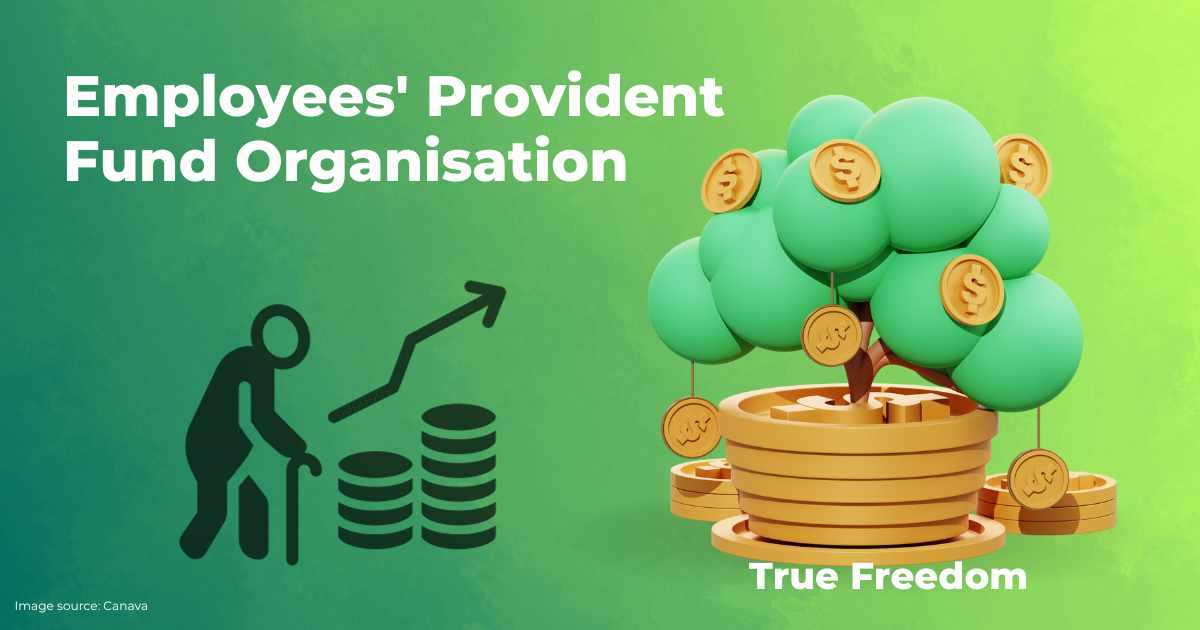Navigating the Indian Employment Landscape: Understanding the Employees' Provident Fund Organisation (EPFO)

Introduction
The Employees' Provident Fund Organisation (EPFO) is a crucial entity
in India's labor welfare framework. Established in 1952, the EPFO is a
statutory body under the Ministry of Labour and Employment, Government of
India. Its primary objective is to safeguard the financial interests of
employees and provide them with a sense of security for their retirement years.
The EPFO's Mandate
1. Provident Fund (PF) Management:
The EPFO manages and administers the Employees' Provident Fund, which is a retirement savings scheme for salaried employees. Both employers and employees contribute a fixed percentage of the employee's salary to this fund.
2. Pension Scheme:
Alongside the PF, the EPFO also manages the Employees' Pension Scheme (EPS). It provides a pension to employees after their retirement, disability, or in case of the employee's demise.
3. Insurance Scheme:
The Employee's Deposit Linked Insurance Scheme (EDLI) provides life insurance coverage to employees who are members of the PF. In case of the employee's unfortunate demise during their service period, the nominated beneficiaries receive a lump sum amount.
4. Regulation and Compliance:
The EPFO sets the rules and regulations regarding the operation of the
Provident Fund, Pension Scheme, and Insurance Scheme. It also ensures that
employers adhere to these guidelines.
Key Stakeholders
1. Employees:
They are the beneficiaries of the EPF, EPS, and EDLI schemes. A portion of their salary is contributed towards these schemes for their future financial security.
2. Employers:
Employers are responsible for deducting the employees' contribution and depositing it with the EPFO. They also contribute an equal amount towards the employees' PF account.
3. Government:
The EPFO operates under the jurisdiction of the Ministry of Labour and Employment, and the government is responsible for formulating policies and regulations concerning EPF.
Benefits of EPF Membership
1. Retirement Security:
EPF provides employees with a reliable source of income after retirement, ensuring financial stability during their non-earning years.
2. Tax Benefits:
Contributions made towards the EPF are eligible for tax deductions under Section 80C of the Income Tax Act.
3. Insurance Cover:
The EDLI scheme provides life insurance coverage, offering financial support to the family in case of the employee's demise.
Recent Reforms and Digitalization
In recent years, the EPFO has taken significant steps towards digitizing its operations. This has streamlined processes, reduced paperwork, and enhanced transparency. Online services, such as UAN (Universal Account Number) activation, e-passbook, and online transfer claims, have made it easier for both employers and employees to manage their PF accounts.
1. Universal Account Number (UAN):
The UAN is a unique 12-digit number assigned to every EPF member. It acts as a single identifier for multiple PF accounts that an individual may hold over their career. This eliminates the need for employees to obtain a new PF account number when they change jobs.
And, these changes have significantly streamlined processes and reduced bureaucratic hurdles. Here are some key aspects of the recent reforms and digitalization efforts:
2. Online Services:
EPFO has developed a robust online portal where employees can perform various tasks related to their PF accounts. This includes activities like checking account balance, downloading the e-passbook, and submitting transfer claims.
3. E-Passbook:
The e-passbook is an electronic version of the traditional PF account passbook. It provides a comprehensive record of all transactions, including contributions made by the employee and the employer, interest earned, and withdrawals.
4. Online Transfer Claims:
EPFO's online platform allows employees to easily transfer their PF accounts when they change jobs. This process, known as Form 13, can now be initiated and tracked online, significantly reducing paperwork and processing time.
5. Digital Signature:
EPFO has implemented digital signatures for employers, making it easier and faster for them to verify and approve various PF-related documents. This eliminates the need for physical signatures and speeds up administrative processes.
6. Aadhaar Integration:
EPFO has integrated Aadhaar, India's biometric identification system, into its processes. This has enhanced authentication and verification procedures, making it more secure and efficient for members to access their accounts.
7. Mobile App:
EPFO has launched a mobile application that provides easy access to various services and information related to PF accounts. Employees can use the app to check their balance, submit claims, and update their KYC details.
8. Real-Time Updates:
With the digitalization of processes, EPFO is now able to provide real-time updates on contributions, interest credits, and withdrawals. This ensures that members have immediate access to the most current information regarding their PF accounts.
9. Online KYC Update:
EPFO members can now update their Know Your Customer (KYC) details, including Aadhaar, PAN, and bank account information, online. This reduces the need for manual verification and speeds up the processing of claims.
10. E-Nomination Facility:
EPFO has introduced an online nomination facility that allows members to nominate their beneficiaries for the PF corpus. This ensures a smoother and more straightforward process for transferring benefits to legal heirs.
These recent reforms and digitalization efforts have revolutionized the way EPFO functions, making it more user-friendly, efficient, and transparent. The shift towards digital platforms has not only reduced administrative burdens but also empowered employees with greater control and accessibility to their PF accounts. It's a significant step towards modernizing India's social security system and ensuring that it remains relevant in today's digital age.
Conclusion
The Employees' Provident Fund Organisation is a cornerstone of India's social security system, providing a safety net for millions of workers across the country. By effectively managing the Provident Fund, Pension Scheme, and Insurance Scheme, the EPFO plays a vital role in ensuring the financial well-being of employees during their active years and after retirement. With ongoing digital initiatives, the EPFO continues to evolve to meet the needs of a rapidly advancing economy.
